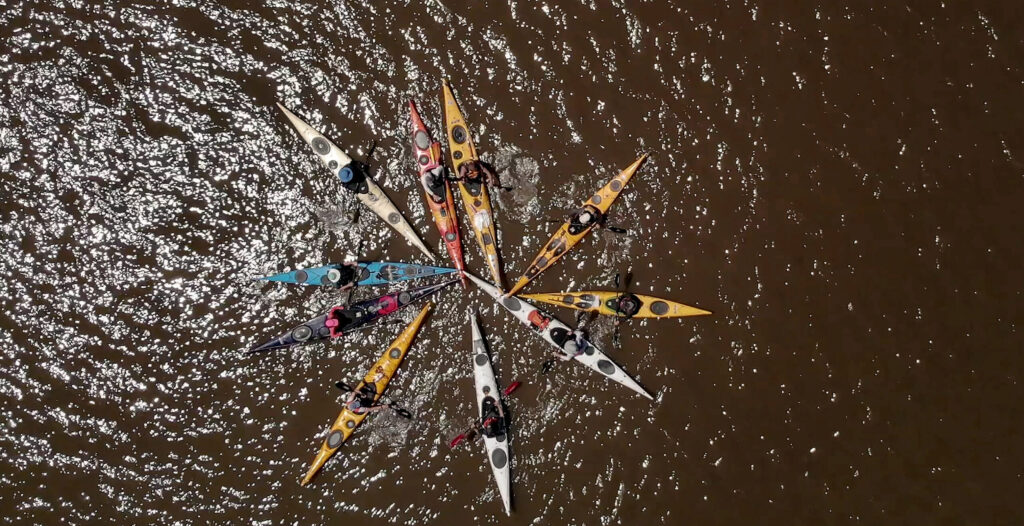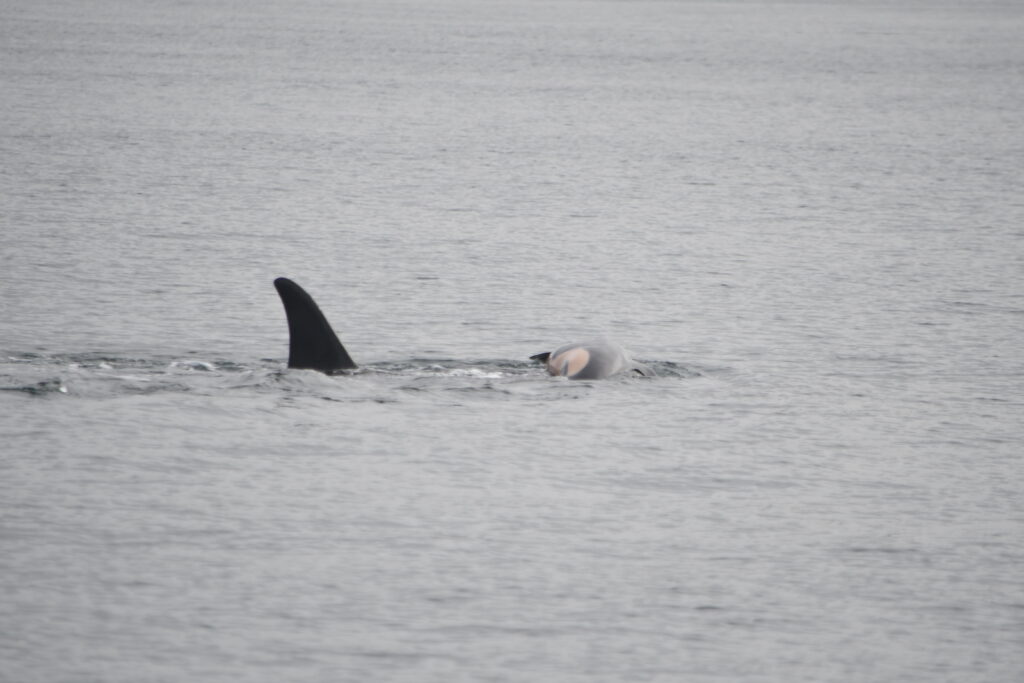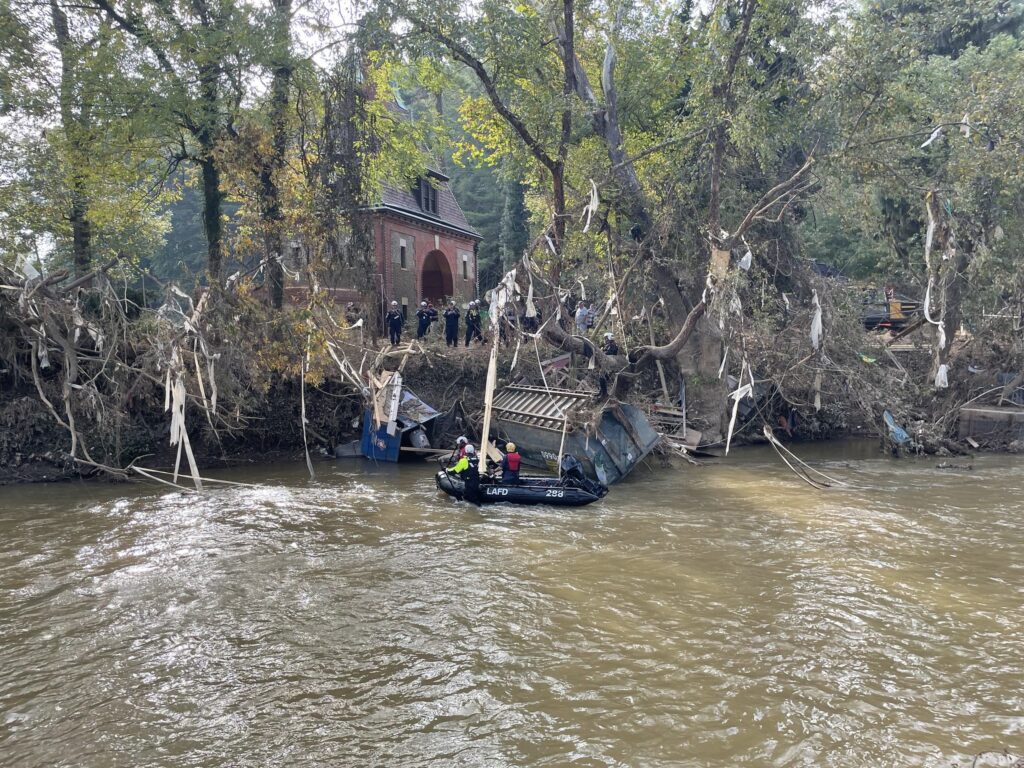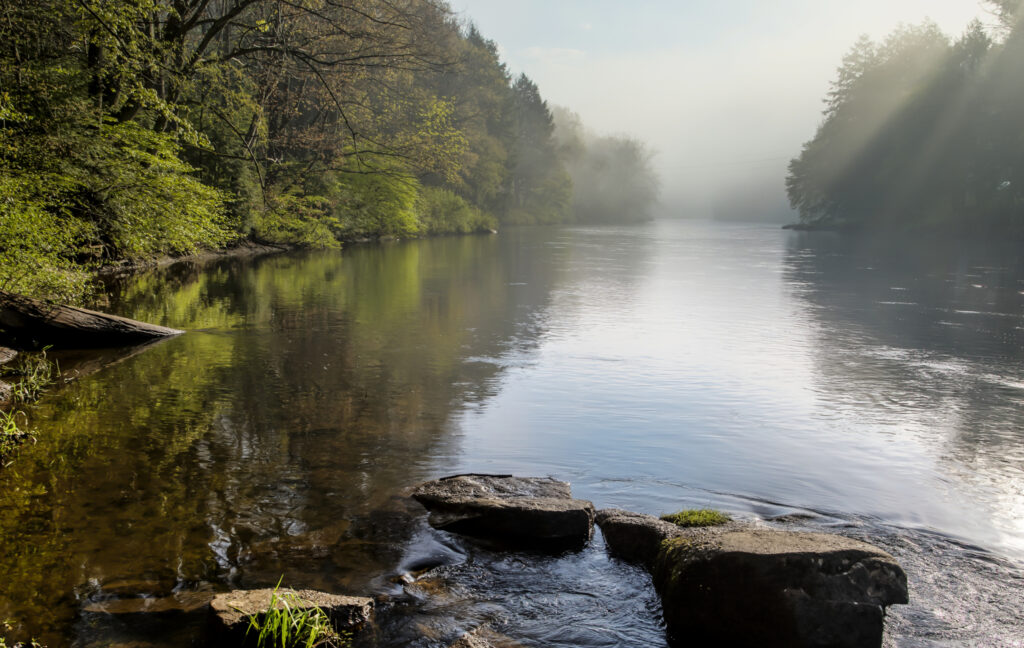My growing understanding of environmental justice
A guest blog by Amanda Leiter, a Senior Associate Dean and Professor of Law and co-Director of the Program on Environmental and Energy Law at American University's Washington College of Law. She is a board member of American Rivers.

I have a confession: I didn’t used to “get” environmental justice. I admit that not as an inadequate apology to those of you who have lived with environmental injustice or dedicated your lives to fighting it, but instead as an invitation to others to join my journey toward greater understanding.
I have cared about the environment for as long as I can remember. As a kid, I explored Shenandoah National Park with my parents and brother. Since high school, my favorite pastimes have involved outdoor adventures. I still enjoy scaring my mom by picking up snakes (sorry mom!); I revel in the feeling of stretching out in a sleeping bag after a long day on a trail; I love teaching my kids to climb rocks and roll kayaks. I can’t remember a time when I didn’t seek some way to protect Earth’s magical biodiversity and majestic scenery from the threats of climate change and overdevelopment, and from humanity’s rapacious need to exploit all natural resources for personal gain.
But when I first heard about “environmental justice,” I thought the term described someone else’s fight. I recognized the injustice of choosing to dump toxic waste near a community of color merely because the community lacked political clout. I even understood the importance of fighting that injustice. But I held that understanding in my head not in my heart—intellectually, not personally—much as I understand the importance of fighting for freedom of speech. Freedom of speech is vital to a democracy, and I’m glad others fight for it … but not me; I’d rather spend my days defending wild places and free-flowing rivers and dusky gopher frogs and clear blue skies.
My shift in understanding has been gradual. Over the last decade, I’ve worked with environmentalists of color. I’ve visited more communities on the frontlines of environmental battles. I’ve visited my husband’s family in southern India and breathed the heavy air in those cities. I’ve read widely. Most recently, my colleague Ingrid Lesemann and I assembled a syllabus and readings and invited a dozen guest lecturers to help us teach a one-week intensive law school environmental justice course. (I’ll be honest—the guests taught; we and the students learned.)
The lessons from those efforts are humbling, and range in scale from global to local. Here are a few:
Globally: I have long worried about the impacts of climate change on ecosystems and human health. Until recently, though, I hadn’t focused on the fact that by the end of the century one in three people will likely find themselves either displaced from their homeland or, if they stay, forced to live in conditions outside the climate range that has supported human life for millennia. Almost all of those displaced (or effectively displaced) people will be Black or brown, and they will bear those consequences despite having contributed very little to the carbon loading that caused their climate to change.
Nationally: I knew I lived a comfortable life in my leafy Washington, DC, neighborhood, but I took basic comforts like running water entirely for granted. After all, I thought, most communities in developed nations have enjoyed indoor plumbing for almost a century. Not so: about two million Americans still lack access to clean running water. On the Navajo Nation in Arizona, at least 15% and up to 40% of the population still uses outhouses and carries water from wells. Further, if you’ve read about the recent Flint, Michigan water crisis, you know that indoor plumbing is no guarantee of water quality, because government officials sometimes ignore or discount chronic complaints about bad-smelling, discolored water and associated health problems. Flint is hardly the only urban center to face such a crisis. And there’s an undeniable racial valence to that neglect. I’m no expert on systemic racism, but my recent experience at a neighborhood council meeting (at which a few of my neighbors almost defeated a proposal to redevelop a small apartment building) leaves me quite certain that city officials neither would nor could ignore water-infrastructure complaints from wealthy white communities like mine.
Another national lesson relates to the park that first sparked my interest in the outdoors. As a child, I thought of Shenandoah as an inclusive space, managed by the federal government for all Americans. But recently, the National Park Service has begun to tell the full story of the park’s history. In the early years of the Service, superintendents deferred to local segregation laws, and Shenandoah’s superintendent was no exception. In the 1930s, that meant certain facilities were designated for African American visitors, others were “integrated,” and others were undesignated—presumptively reserved for whites.
Locally: The local lessons upset me most. Until recently, I simply didn’t know that in my home city, residents of the whitest, wealthiest ward (ward 3) have life expectancies almost 20 years longer than the predominantly Black residents of the lowest-income wards (7 and 8)—almost 90 versus 70 years. Moreover, asthma rates in wards 7 and 8 are almost three times higher, and COVID-19 mortality per capita is almost four times higher, than in ward 3. Many factors contribute to these disparities, but almost all of them tie back to race and the environment: relative levels of air pollution; relative ease of access to clean water, healthy food, and walkable streets; relative proximity to green spaces.
Why did these local lessons hit me hardest? Because I’ve lived in DC for most of my life, but I didn’t know the extent of these disparities until I started to read about COVID-19 outcomes. So that’s two injustices in one—the unjust disparities themselves, and the injustice inherent in the fact that I could live here for almost 40 years, and regularly read the local paper, yet remain ignorant of the environmental conditions affecting my neighbors’ lives.
————–
So where am I on this journey? I still have a lot to learn, but I already see that almost every environmental issue implicates equity. For too long, we have built largely white advocacy groups with largely white boards; we have focused too narrowly on protecting beautiful places without recognizing that many people are fighting environmental battles closer to home; we have failed to partner with the communities on the front lines of those battles. And when we have approached those communities, we have too often offered solutions rather than pausing to listen, or expressed support without dedicating significant funds.
Many environmental groups have made notable changes in recent years. (For NGO report cards, check out www.diversegreen.org.) Some have begun to take steps but still have a long way to go. I place American Rivers in the second category, but board members and staff have completed and are beginning to implement an organization-wide diversity, equity, and inclusion plan, and some of our recent work, like the excellent Rivers As Economic Engines report, begins to confront the enormous inequities in U.S. water infrastructure investments.
Environmental justice problems require a willingness to acknowledge privilege and adopt a more inclusive approach. I hope this post might prompt you to reflect, read, and start an uncomfortable conversation or two. We face existential environmental threats almost everywhere around the world, and we won’t succeed in combating them unless we’re all fighting together, for a healthy environment that everyone can enjoy.




4 responses to “My growing understanding of environmental justice”
Great article, great revelation, even greater if you read the 1994 report of the National Council for Science and the Environment: titled, Environmental Justice:Breaking New Ground. And, to top off your reading list, get a copy of THE COLLEGE/UNCF’s Department of Environmental Education Programs’s 1995 Environmental Justice A Source Bibliography funded by the USEPA. Knowledge is great, having the wisdom to use it to create positive change is even greater.
SJW’s offering more victimhood and identity politics!
You sound just like the prognosticators from the first earth day in the 1970’s. If you want a good laugh read the ridiculous predictions and then please check yourself!
You offer nothing but chaos and financial ruin for the poor and working classes.
I have discovered my community has been contaminated…I have come to understand environment .NEJAC has paved the road for us to have voice..with the statistical grid as source of proof..My concerns have now been discussed and are now being investigated..like to hear my story contact ..I would like to know about your journey.
I hope John Peach and STR recognize that they need to get this perspective into their public relations persona. Black lives matter, support the concept and that all people should be welcome in the North Country environmental community and everywhere.